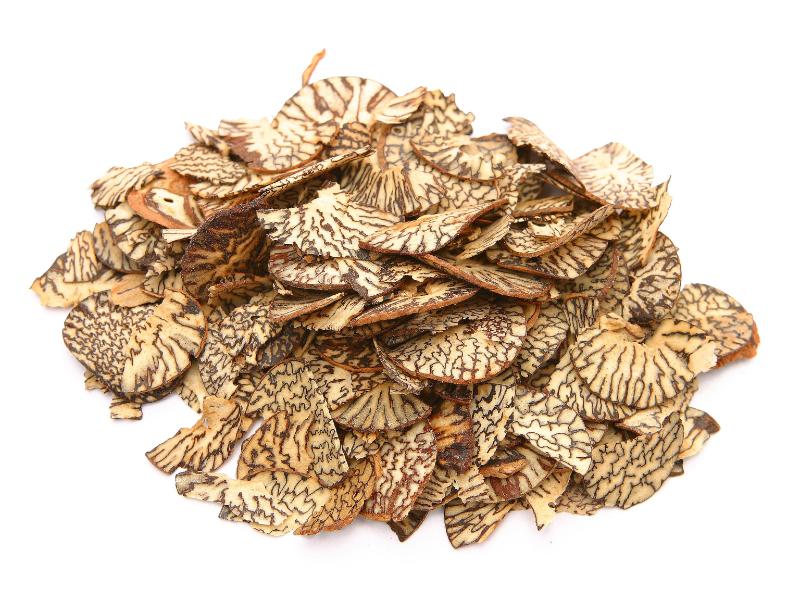Search in medicinals
Arecae Semen
Areca [nut]
槟榔 〔檳榔〕 bīng láng

Alternate English names: betel nut pinang
Alternate Chinese names: 仁频 rén pín; 槟门 bīng mén; 槟门药钱 bīng mén yào qián; 白槟榔 bái bīng láng; 槟榔仁 bīng láng rén; 大腹子 dà fù zǐ; 大腹槟榔 dà fù bīng láng; 槟榔子 bīng láng zǐ
Kingdom: Plant
Origin in PRC Pharmacopoeia: Areca catechu L. (PRC Pharmacopoeia)
Origin in unofficial sources: Areca catechu L.*
Use: Medicinal
Category: Worm-expelling agents
Properties: Bitter, acrid; warm.
Channel entry: Stomach and large intestine channels.
Actions and indications:
- Expels worms: Used for many types of worm diseases.
- Disperses accumulation: Food accumulation with qì stagnation, diarrhea, and tenesmus.
- Moves qì and disinhibits water: Water swelling; leg qì with swelling and pain.
- Additional uses: Bīng láng may be used for malaria with incessant enduring heat effusion with aversion to cold. Bīng láng interrupts malaria, especially when combined with the other malaria-interrupting medicinals Cháng shān (常山 Dichroae Radix, dichroa [root]) and Cǎo guǒ (草果 Tsaoko Fructus, tsaoko [fruit]).
Dosage and method: Oral: 5–10g in decoctions.
Notes: In countries where fresh betel nut is grown, it is sometimes chewed as a mild psychoactive drug. While many regional preparations exist, most involve a combination of the fresh area (betel) nut, limestone paste, and the fresh leaf of a plant known botanically as Piper betle L. (The English alternate name for areca, betel
is wrongly derived from the name of this leaf). The preparation is a mild stimulant, and it is associated an increased risk of oral cancers in chronic users. As used in Chinese medicine, betel nut is widely regarded as safe.
Product description: This seed is spheroid or conical in shape, 4 cm in length, and 3 cm in diameter at the base. The base bears a slight depression in which a small embryo and large scar-like hilum lie. The exterior surface is a pale reddish-brown, with a distinct reticular formation of shallow light-colored grooves. Sometimes the silvery brittle endocarp and fibrous mesocarp are partly exposed. The fruit is hard. The decocting pieces are 1–2 mm slices that reveal a marble-patterned cross section created by the maroon of the seed coat folds amid the endosperm. The center of the seed is often hollow.
Quality: Large, hard, unbroken fruits are the best.
Production area: Southern Táiwān, Hǎinán, southern Yúnnán.
Etymology: The name bīng láng 槟榔, explained by some as being an item offered to bīn láng 宾郎, guests, is actually named after the Malaysian city Penang, a major place of origin. Hence also the English pinang. Note that the English betel nut is something of a misnomer because betel actually refers to the plant that produces the leaves (betel leaf, 蒟酱叶, jǔ jiàng yè, traditionally eaten with areca nut as a recreational drug in India and South-East Asia.
See: Jǔ jiàng yè (蒟酱叶 Piperis Betle Folium, betel leaf)
Back to search result Previous Next